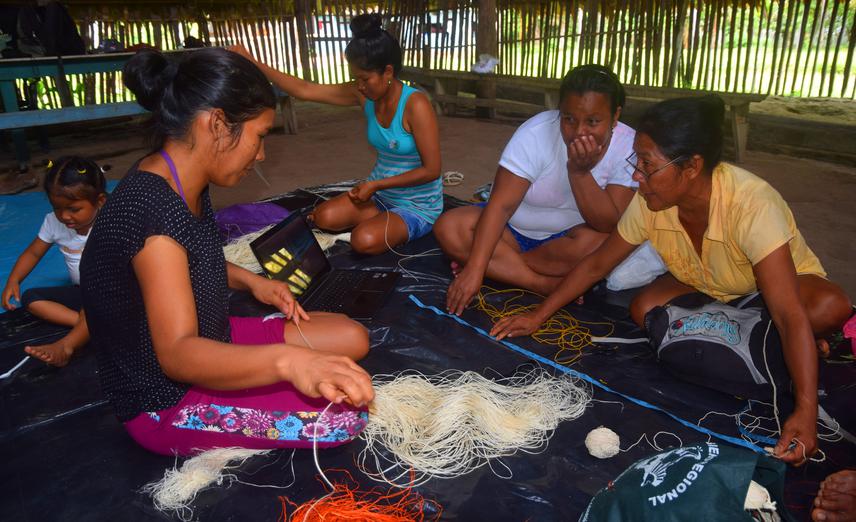Campbell Plowden
Other projects
16 Oct 2009
Sustainable Harvest and Marketing of Non-Timber Forest Products (NTPFs) with Indigenous Communities in the Northern Peruvian Amazon I
30 Aug 2011
Sustainable Harvest and Marketing of Non-Timber Forest Products (NTFPs) with Indigenous Communities in the Northern Peruvian Amazon II
Promote the sustainable harvest and marketing of non-timber forest products (NTPFs) including innovative handicrafts and fragrant essential oils with indigenous communities in the northern Peruvian Amazon (Peru).

Angelina and shushupe group at PU workshop.
This project promotes forest conservation in and around the 433,000 hectare Ampiyacu-Apayacu Regional Conservation Area in northern Peru by empowering native communities to sustainably harvest and market value-added NTFPs as alternatives to logging, commercial hunting and cash-crop agriculture. It creates tangible incentives to safeguard the area’s 1,500 plant and 700 vertebrate species by treating rich biodiversity and traditions as assets to improve livelihoods.
We will progress from researching copal resin abundance and recovery on a tree by tree basis to designing systems for villagers to sustainably harvest copal on an area basis in the real social context of their communal forests. While assisting Bora woodsmen to nurture their rosewood saplings to sustain modest leaf harvests in several years, we will learn how to harvest, grind, and distil leaves and small branches from older rosewood trees with campesino families in Tamshiyacu. We will shift from experimental distillations in an alembique pot to a small-scale commercial operation using a shredder and stainless steel distiller to produce litres of copal and rosewood oil for sale to fragrance and aromatherapy companies and individuals online for £345 or more per litre.
Our initial handicraft work expanded the number of artisans, villages and products involved with our project, measured chambira abundance in one village and introduced a new saw to eliminate negative impacts associated with machete harvesting. The next phase will focus on encouraging artisans to work together in small groups to improve the quality and quantity of their crafts and use data gathered on chambira palm abundance and yield in craft making to help artisans use minimum impact harvesting techniques and plant sufficient chambira and dye plants to satisfy the growing demand for sustainably produced handicrafts.
We will continue to collect photos, videos, and stories about the people, plants, and places involved in making these essential oils and crafts in the Ampiyacu to share with our partners in the region as an example of community based forest conservation. The success of this project will show native men and women that they can improve the livelihood of their families and well-being of their communities by using their creativity, working together and carefully managing their non-timber resources without imposing severe impact on the forest.